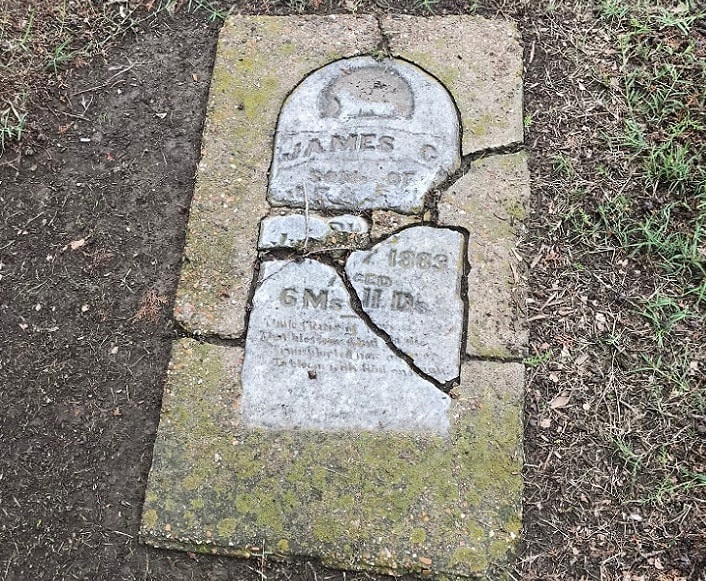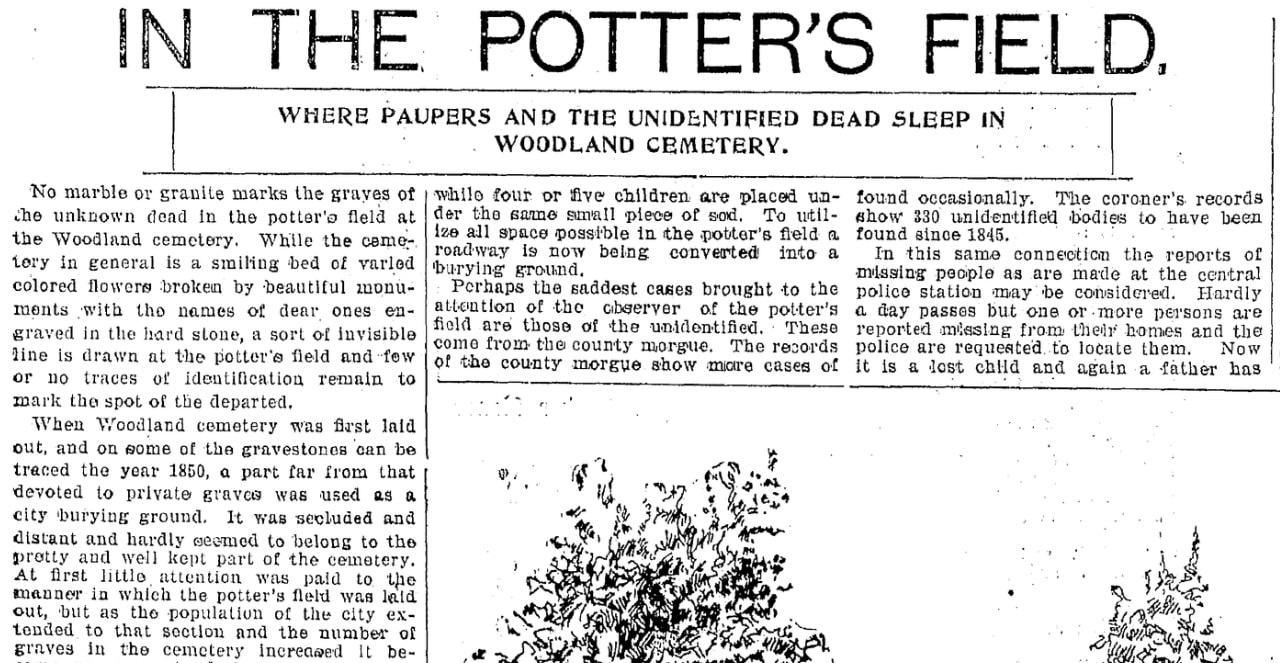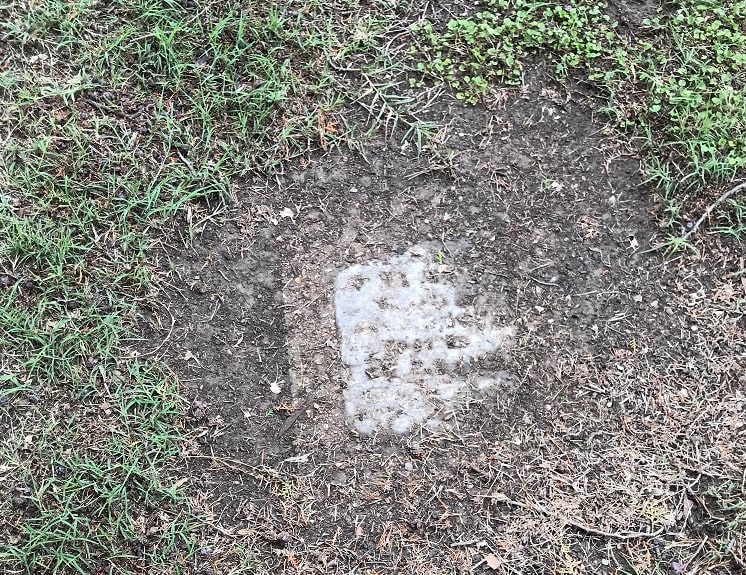Introduction: In this article, Gena Philibert-Ortega writes about problems trying to find your ancestor’s burial site, and gives tips on how to proceed. Gena is a genealogist and author of the book “From the Family Kitchen.”
Many family historians are surprised when they can’t find an ancestor’s burial. Cemeteries are a favorite destination for family historians, and it can be quite disappointing not to find an ancestor’s final resting place. Having written a book about cemeteries and having visited cemeteries in various states, it’s obvious to me why burials sometimes don’t exist. Unfortunately, there are ancestors whom you will never find burial information for. Why? To understand that answer you need to consider the problems with cemeteries and burials.

The Problem with Cemeteries
In the United States, depending on the time period you are researching, a burial may not be in what we tend to think of as a cemetery, but rather a plot of land on what was then a family farm (our family’s or a neighbor’s). Over time that land may have been repurposed or forgotten.
In addition, not everyone was deemed “worthy” of burial in a local cemetery. Various ethnic and religious groups may have not been welcome in the “city” cemetery and thus were buried in a separate cemetery that has been forgotten over time. Some other groups of people, because of occupation or life choices, may not have been welcome in a cemetery – such as prostitutes in a mining community.
Assuming first that your ancestor was buried on land that was designated as a cemetery (and not at sea, for example), there can be various problems with cemeteries, including:
- Cemeteries do not “last” over time. Cemeteries may disappear because of “progress” (housing, retail spaces, flooded land, etc.). I have ancestors that are now underwater because of flooding, an ancestral family plot that is under a golf course in North Carolina, and family that was exhumed and reburied in the 20th century when San Francisco decided they needed the land for the living more than the deceased. It’s also not unusual to find that a cemetery has been repurposed as a “pioneer park” or other community recreation site. In one Southern California town, the cemetery is now a park and all of the tombstones are stacked behind a government building.

- Cemeteries may now be on private property. It’s possible that the land your ancestors were buried on was at one time family land but now is private property, and access may be denied or limited.
- Cemeteries are not always respected. In some cases, a cemetery may have been desecrated by a property owner, local community, or other groups because of the lack of respect, historically, people have had for cemeteries.
The Problem with Grave Markers
To a genealogist, a grave marker with several clues to our ancestor’s life is a treasure – but I count myself extremely fortunate when I can find such a marker because in some cases it can be rare. Why? Consider the following reasons:
- Grave was never marked. Not everyone had a marker, and if the cemetery records aren’t extant, you may not be able to find out if your ancestor was buried there or not. It’s important to remember a grave may not have been marked for a variety of reasons including cost, no family survivors, or death in a faraway location.

- War fatalities. Unknown soldier burials. In the case of Civil War soldiers (and even earlier wars), they may have died without identification, so their burial is under a marker that simply reads “Unknown U.S. Soldier.” Other circumstances in earlier and later wars can also result in no marked final resting place for a soldier or a sailor.
- Disasters and pandemics. When the loss of life is large, the dead may be buried together in a common grave. The place may be marked, but it may lack a list of everyone buried therein.
- Poverty. Your ancestor may have been buried in a potter’s field with or without a marker. In some cases the cemetery may have a list of those burials, but they may not be marked.

- Death in an institution. An ancestor who died in an institution such as an asylum or prison may have been buried in that institution’s cemetery. It’s not uncommon for those burials to have a marker identifying the person with a number instead of a name. In one institution I researched, the unclaimed dead were donated to the local teaching hospital and then later cremated and scattered, resulting in no marked burial.
- Grave was marked with a wooden marker. Some materials don’t hold up over time, and wooden markers are a good example of this. Over time the writing on them disappears, and eventually the wood itself.
- Grave marker was stolen or metal parts of it were stolen. Whole markers or metal parts of markers are sometimes stolen. In the case of metal, it’s not unusual to have those parts brought to a metal recycler for money. I’ve seen markers where those metal portions are the pieces that can have the identifying information. In either case, it results in either an unmarked grave or a poorly marked one.
- Exposure to the elements. Over time markers can become worn due to being made of a softer stone, breakage, or even the growth of lichens or other natural materials obscuring writing or otherwise destroying the marker altogether.
- Cremation. The first crematorium in the United States was built in 1876 in Washington, Pennsylvania. A second one followed in 1884.* Not everyone who has been cremated has a marked burial place. In some cases, the ashes may have been scattered in a natural area, in the ocean or a lake, or maybe just never buried.
Now What?
So, you can’t find your ancestor’s burial. I know how frustrating that can be. As researchers it leaves us with a lot of unanswered questions. I have an ancestor and his daughter that most likely are buried on the land his family owned. However, today the land is thick with trees and the present owner has never seen graves on the land. Most likely those burials are now unmarked for whatever reason and the land obscured. We have one clue that they are buried there but no photographic evidence, and most likely we never will.

So, how can you do an exhaustive search when you can’t find your ancestor’s burial?
- Seek out local histories to determine possible local burial places for the time and place of your ancestor.
- See if you can find archival collections left behind by the ancestor’s FAN Club (Friends, Associates, and Neighbors) that might mention your family or even attending the funeral.
- Read historical newspapers for mentions of burials during that time period.
- Finally, keep checking back. There’s always a chance that new information will come online or a diary will be donated to an archive that provides the answers you need.
Finding an ancestor’s burial may seem easy, but there are all kinds of factors that may make it impossible. However, make sure to conduct an exhaustive search so that you know you have in fact looked “everywhere.”
* “History of Cremation,” Cremation Association of North America
Related Articles:

Thank you for writing this article about cemeteries. It’s true, you never know what you will find when searching for an ancestor or family.
Thank you, Mona. It’s very true, cemeteries have a lot to teach us and there are differences depending on where they are located. They are such an important source for our genealogy.
Thanks for your comment.